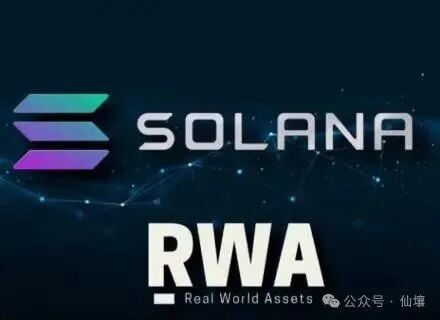Author: HY & Adam, Xianrang
The history of blockchain development has proven that only business scenarios related to financial transactions can survive in Web3. RWA cleverly combines the advantages of real-world assets and on-chain transactions to reshape the global financial landscape. Through blockchain technology, RWA transforms traditional assets such as commodities, credit, and stocks into on-chain tokens, enabling efficient ownership management and transfer while significantly lowering the barrier to entry for financial asset transactions.
According to current data, the total circulating market value of RWAs outside of stablecoins has exceeded US$33 billion, but this is just the beginning. According to the Boston Consulting Group (BCG), the scale of on-chain RWAs will reach US$16 trillion by 2030.
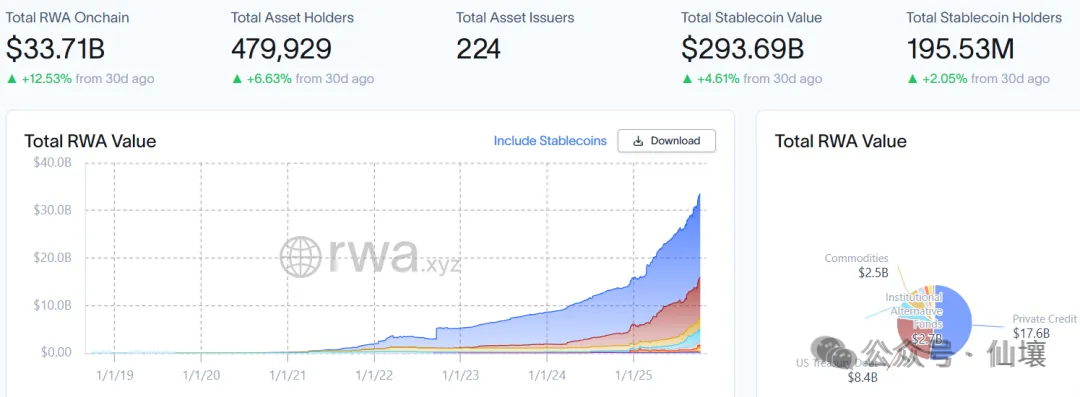
The potential of RWA is undoubtedly huge. However, on which public chain will the mainstream RWA narrative become a reality first?
As the leading public blockchain in the DeFi space, Ethereum holds over 50% of the RWA market. Solana, with its robust ecosystem development, has captured 3.2% of the RWA market, ranking seventh among major public blockchains and a significant presence. With giants like BlackRock channeling billions of dollars in RWA assets into Solana through the Securitized platform, its RWA ecosystem has entered a period of rapid growth.
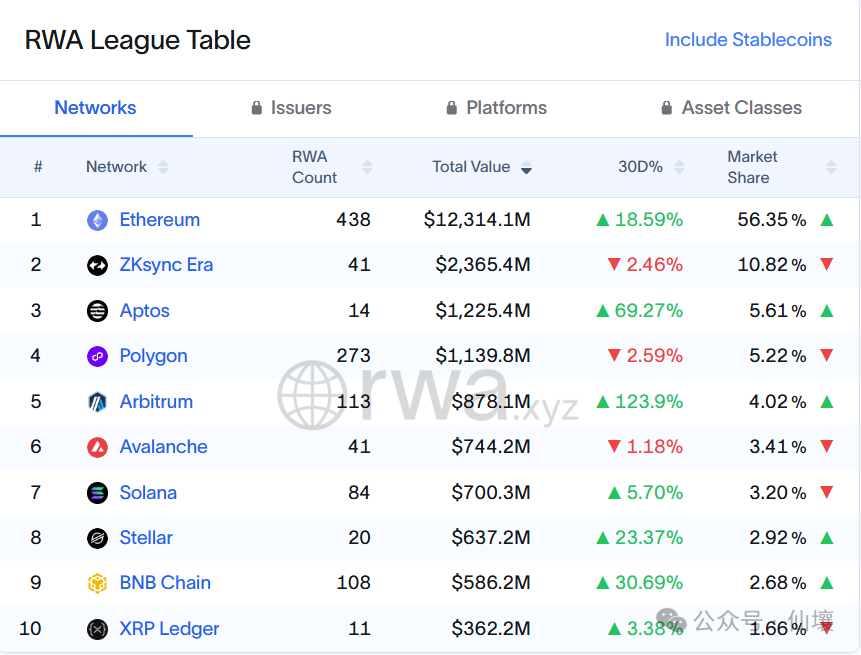
In today’s article, we will delve into Solana’s current status in the RWA space, providing a comprehensive and systematic survey for investors, developers, and industry observers.
A Panoramic Analysis of the Solana Ecosystem RWA Project
Many users in the RWA market come from traditional stock markets or commodity markets. For these people, whether the platform can respond to user requests in a short time and provide a low-latency, low-cost trading experience is a key factor.
To address transaction latency, many RWA projects adopt a multi-chain deposit-taking strategy with a single-chain settlement. Solana, with its high TPS, is a suitable execution platform for RWAs. The fact that CMB International's on-chain RWA fund, CMBMINT, chose Solana for its initial launch demonstrates its appeal.
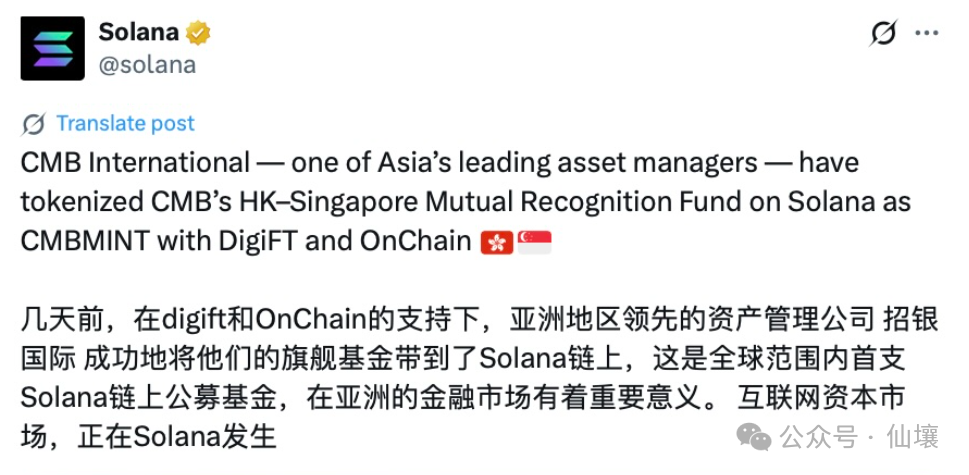
Furthermore, RWA applications typically involve a large number of small transactions, such as rent distributions and interest payments. Excessively high gas fees can severely erode yields. For example, Homebase, a well-known real estate tokenization platform, processes thousands of small rent distributions each month. This micropayment model places extremely strict demands on low transaction fees, and Solana, with its ultra-low transaction fees, offers a natural advantage.
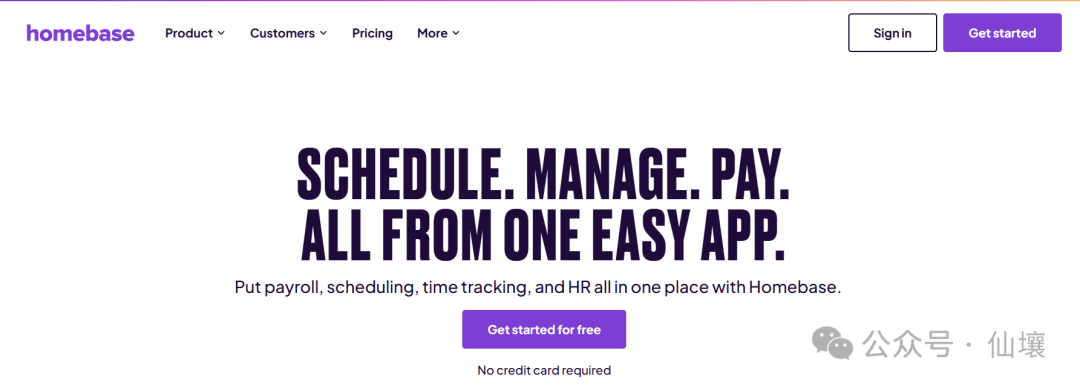
Data indicates that Solana's RWA ecosystem, while still in its early stages, is already showing strong growth. According to RWA.xyz, there are currently 94 RWA assets within the Solana ecosystem, with a total market capitalization of $700 million. In the past 30 days, RWA transfers on the Sol chain have reached $18 billion, placing it second only to Ethereum in terms of transaction volume.
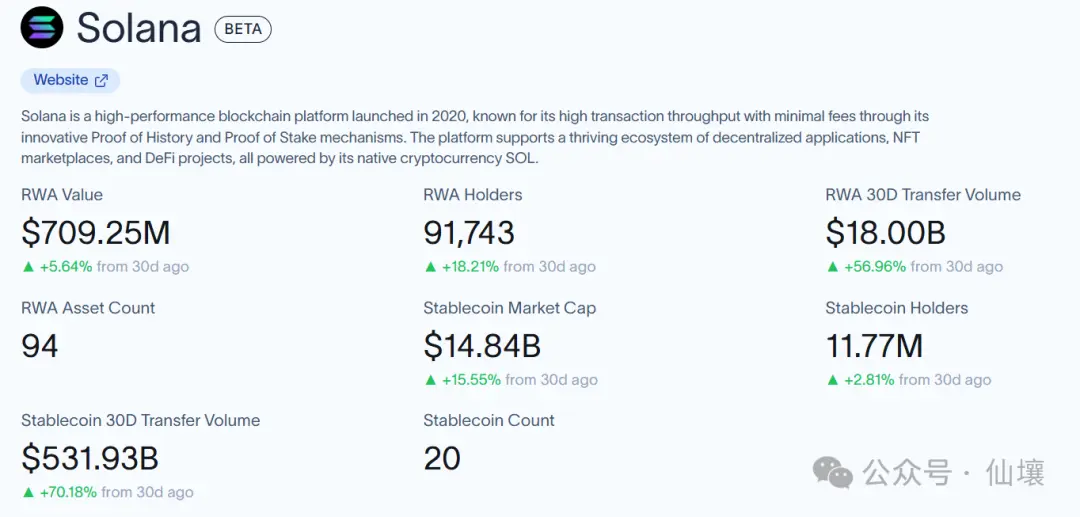
Solana's RWA ecosystem has developed a diverse structure, encompassing a wide spectrum of assets, from physical assets to financial instruments. Below, we will introduce typical RWA project examples by category.
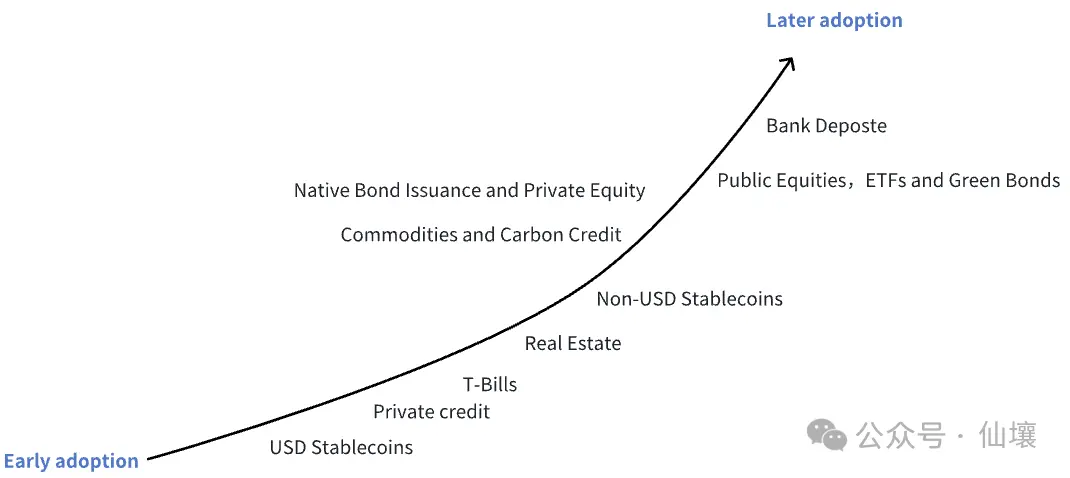
government bonds
Currently, government bonds on-chain are one of the most popular and prominent RWA asset types. Government bonds offer stable, risk-free returns, making them highly sought after in the financial market. Compared to traditional financial markets, tokenized government bonds allow for 24/7 trading, fragmented retail offerings, and integration with the DeFi ecosystem to enhance liquidity.
Below, we will analyze several typical cases. Note that yield-generating stablecoins collateralized by government bonds essentially put government bonds on-chain and enjoy the benefits of government bonds. This article also classifies these RWA products as government bonds.
Maple Finance (USDC-SPL)
Maple is a well-known Treasury-related RWA project on Solana. Founded by Sid Powell and Joe Flanagan, it focuses on institutional-level lending and asset management. Since its launch in May 2021, it has facilitated over US$7 billion in loans and managed over US$1.7 billion in assets.
In May 2023, Maple launched the Maple Cash Management Pool, an asset management solution. This offered users a net APY of approximately 4.8% based on Treasury bond yields. Users could freely enter and exit the pool as needed without incurring lock-up or redemption fees, making it the first Treasury bond-based RWA in the Solana ecosystem. While this product has now been expanded to include USDC lending, its groundbreaking role in the Solana ecosystem warrants further consideration in this article.
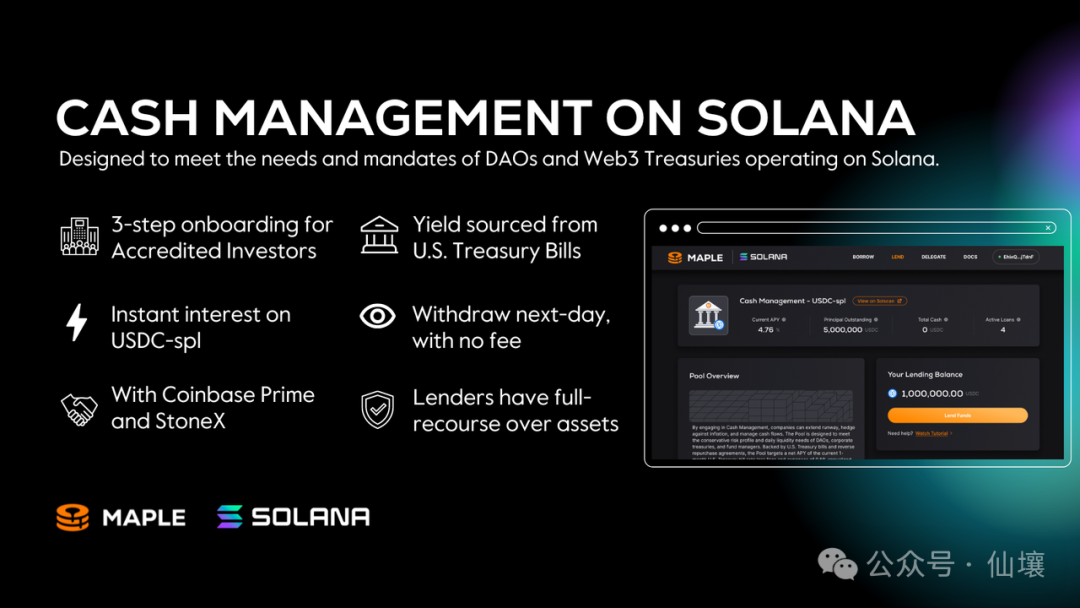
Based on the return principle of Treasury bond RWA, we can break down Maple's workflow into the following steps:
- Funding: Lenders deposit USDC into Maple Finance’s funding pool and receive LP tokens representing their share of funding.
- Loan issuance: The fund pool lends USDC to the Solana wallet of the US crypto investment company Room40 Capital.
- Treasury Bond Investment: Borrowed USDC is converted to USD through Circle and invested in Treasury bonds. Room40 Capital, as the borrower, manages the Treasury bonds to generate returns.
- Profit distribution: The income generated by treasury bond investments flows back to the capital pool through the Maple platform, and lenders receive returns based on their LP shares.

In the above case, Room40 was unable to conceal the flow of USDC funds due to the transparent and immutable on-chain data. Furthermore, relevant real-time audit institutions would review the returns of Room40's investment targets off-chain. If the Treasury bond yields reported by Room40 did not match the returns allocated on-chain, USDC lenders would immediately detect the anomaly.
To prevent illicit activities by institutional investors like Room40, Maple Finance requires all participants on the platform, including lenders and borrowers, to undergo KYC and AML verification, with Maple conducting rigorous due diligence on their identities and operational backgrounds. This integration of on-chain and off-chain processes mitigates the potential for institutional investors to engage in illicit activities.
Ondo Finance(USDY&OUSG)
Currently, Ondo Finance has become the leader in the RWA track. Its flagship product USDY (Ondo USD Yield) and short-term government bond tokenized asset OUSG are the most representative RWA products in the Solana ecosystem. With high transparency, high liquidity and stable yields, they have attracted a large number of investors.
As of October 2025, USDY's circulation has reached 250 million US dollars, ranking first among Solana's Treasury bond RWA projects and is also the largest non-stablecoin RWA asset in circulation on the Solana chain.
USDY works similarly to Maple: users deposit stablecoins like USDC into a pool through the Ondo platform, which then invests these funds in U.S. Treasury bonds through regulated brokers. The yield on these bonds is distributed proportionally to holders in the form of USDY tokens, with an APY typically ranging from 4% to 5.2%.

USDY not only provides a stable source of income, but holders can also transfer USDY to chains such as Ethereum and Polygon through cross-chain bridges for lending, staking or liquidity mining in DeFi protocols, which is equivalent to an interest-bearing stablecoin.
In addition to USDY, Ondo's other major product is OUSG. After absorbing USDC, the Ondo platform invests it in BlackRock's Short-Term Treasury Bond ETF (SHV), among other assets. The resulting interest is shared among OUSG holders. Currently, the circulating supply of OUSG has reached $79 million. Unlike USDY, OUSG primarily invests in short-term U.S. Treasury bonds.
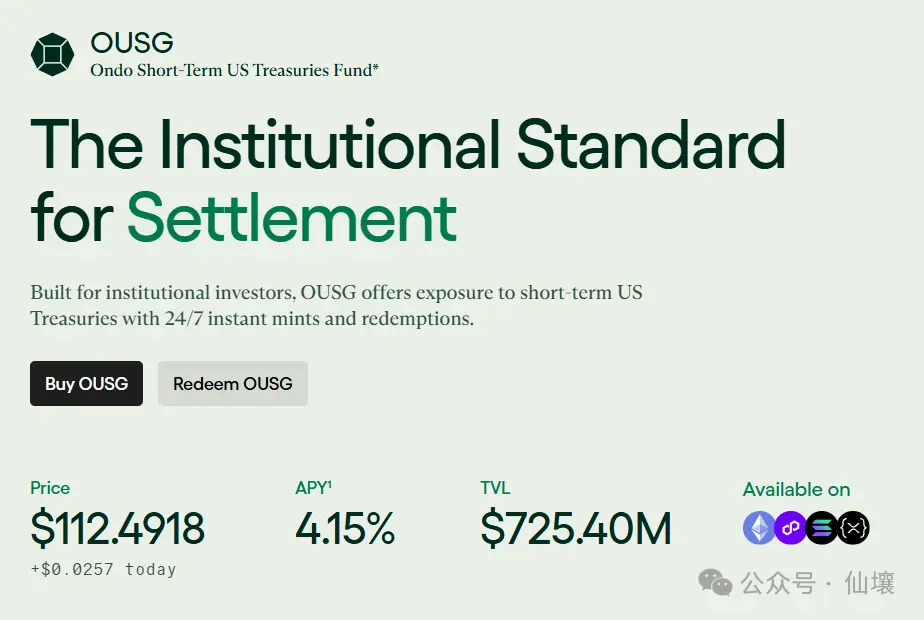
OUSG's annualized yield is generally slightly lower than USDY, but its stability is favored by institutional investors. This difference is due to the fact that USDY invests in some bank deposit notes in addition to U.S. Treasuries, which generally have slightly higher risk and higher returns than Treasuries.
Securitize (BUIDL & VBILL)
Securitize is the first company to enable the issuance of tokenized securities in the United States and Europe. In January 2025, Securitize partnered with Wormhole to bring Apollo Global Management’s $1.3 billion credit fund, $ACRED, to Solana.
Securitize's two main RWA projects on Solana are BUIDL and VBILL, both of which use U.S. Treasury bonds as underlying assets. Combined with Solana's high throughput and low costs, they provide investors with efficient and transparent income-generating investment tools.
BUIDL, a joint venture between BlackRock and Securitize, is BlackRock's first tokenized fund. It launched on Ethereum in March 2024 and expanded to Solana in March 2025. VBILL, a collaboration between asset management firm VanEck and Securitize, will be launched on Solana, Avalanche, BNB Chain, and Ethereum in May 2025. The current market capitalizations of BUIDL and VBILL on Solana are approximately $175 million and $23 million, respectively.


Etherfuse (TUSOURO & EUROB & CETES & GILTS)
In 2024, Etherfuse launched the Stablebonds platform on Solana, focusing on tokenized government bonds. Its major RWA projects on Solana include TUSOURO (Brazilian government bonds), EUROB (European Union bonds), CETES (Mexican government bonds), and GILTS (UK government bonds), with a total circulating market capitalization of approximately $3.9 million on Solana.
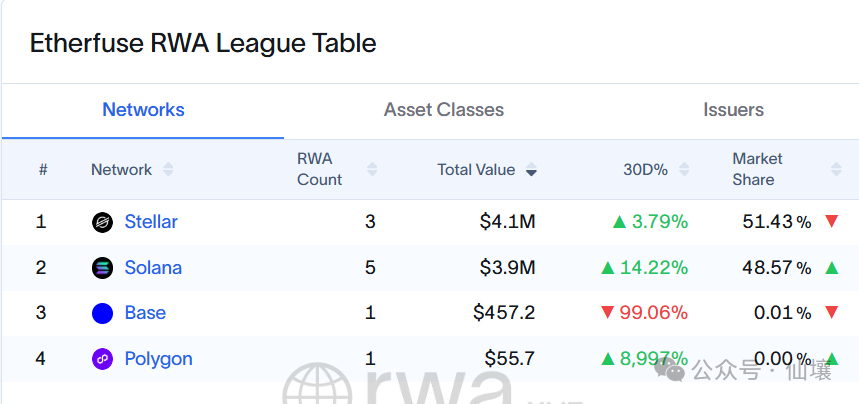
stock
xStock
xStocks, a tokenized stock product launched by Backed Finance, has dominated the Solana tokenized stock market. Within a month of its launch, XStocks' total on-chain trading volume exceeded $300 million, demonstrating the market's demand for tokenized stocks.
Each xStocks token is pegged 1:1 to a real-world stock or ETF. Regulated custodians hold the actual shares, ensuring the token's value is linked to the underlying asset. Price data is synchronized to the blockchain in real time via Chainlink oracles, ensuring transparency and accuracy. Currently, xStocks supports over 60 stocks and ETFs, including Apple, Tesla, Nvidia, and the S&P 500 ETF, including most blue-chip stocks.
Currently, the total market capitalization of xStocks exceeds $94 million.
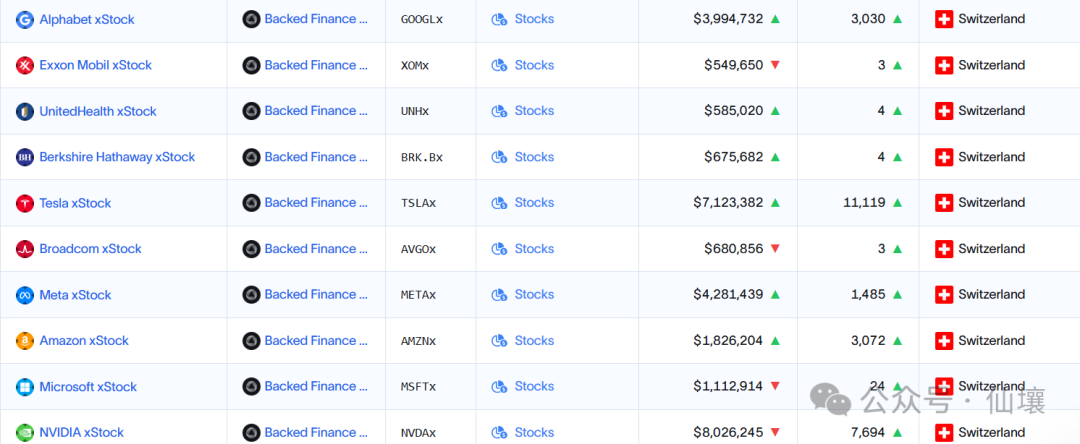
Private credit
Private credit is typically provided by non-bank institutions to borrowers with lower credit ratings, such as small and medium-sized enterprise loans, accounts receivable financing, consumer credit or supply chain finance. This type of credit has higher returns but also higher risks.
After the 2008 financial crisis, private lending quickly became one of Wall Street's hottest investment targets, with the market size growing from $250 billion in 2010 to approximately $2 trillion in 2025. Currently, the only major private lending project on Solana is Credix Finance. Other projects, such as Alloy X, have attempted this before, but they haven't been sustainable.
Credix Finance
Credix Finance, founded in 2021, specializes in private lending (RWAs). Its logic is relatively simple, serving as a lending intermediary platform between on-chain and real-world lending: it borrows USDC from on-chain users, converts it into local currencies, and then lends it to various borrowing entities, providing on-chain users with lending returns.
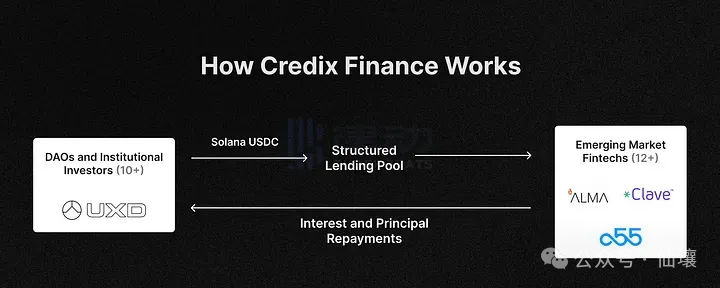
It is worth mentioning that Credix’s Twitter has only been updated once since November 2024, and there is almost no information about it in the media in the past year.
Real Estate Tokenization
Real estate chain-based RWA uses blockchain technology to tokenize real estate, which has always been the main application scenario in the early RWA vision.
Among many public blockchains, Solana is a prime testing ground for real estate blockchain projects. Perhaps the most well-known real estate RWA project on Solana is Homebase, which allows users to invest in NFT-ized properties for as little as $100. However, the platform's official Twitter account has been suspended since August 2024, with no related news for over a year. The list of properties listed as "Available" on its official website is also blank.
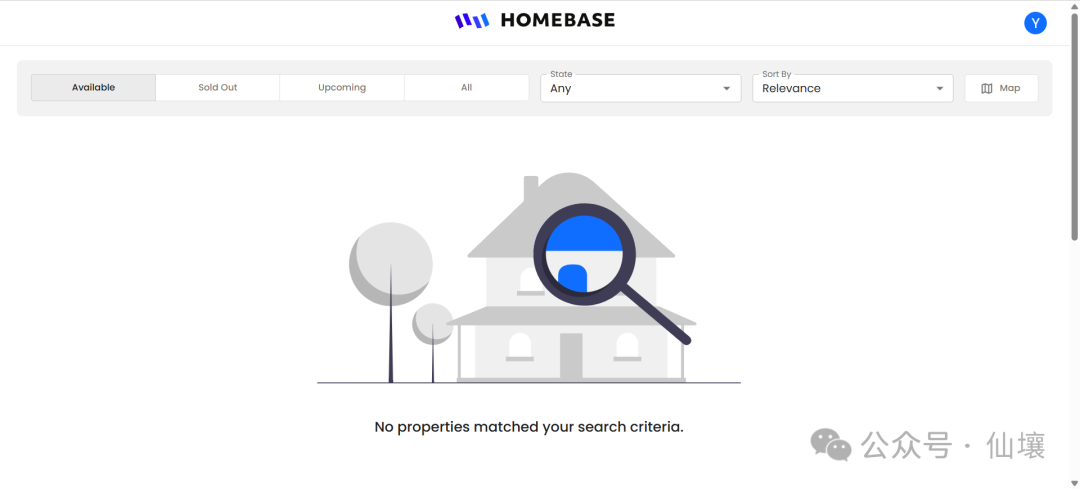
Currently, the active real estate RWA projects on Solana include Parcl and MetaWealth.
Parcl
Parcl is a real estate derivatives protocol that focuses on the tokenization of real estate market price indices, allowing users to gain market exposure by investing in real estate price indices.
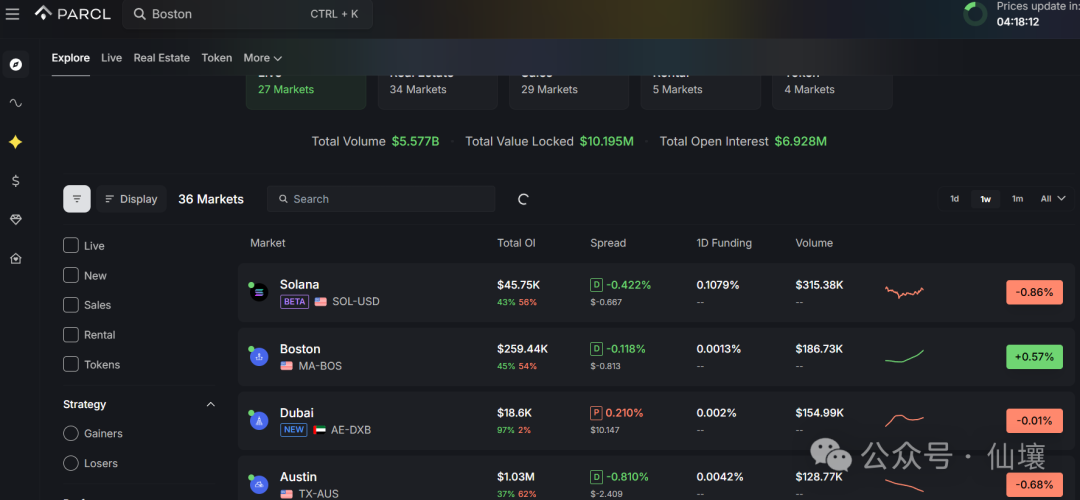
Parcl creates City Indexes, allowing users to invest in real estate market price volatility in specific geographic areas, similar to perpetual contracts that allow users to go long or short on property prices. These indices are based on the average price per square foot or square meter of residential properties. Data is provided by Parcl Labs and updated daily, aggregating millions of data points worldwide to ensure the indices reflect real-time market values.
Think of Parcl as a PerpDEX, but with real estate as the underlying asset. Besides going long or short, users can also add USDC to the pool to add liquidity and earn transaction fees. Furthermore, users can invest with as little as $1, significantly lowering the barrier to entry.
As of now, the TVL on Parcl is approximately $7 million.
MetaWealth
MetaWealth is a real estate tokenization platform open to the EU and Canada, offering users fractional ownership of real estate that can generate passive income.

After completing the audit and research with a third-party quality assessment agency, MetaWealth will acquire and rent out qualified properties. At the same time, it will fragment the ownership of the properties, allowing users to participate in the investment with a low threshold of at least US$100 and receive rent based on the proportion of the investment in the total property price.
MetaWealth currently tokenizes 138 properties, generating $850,000 in revenue, with 50,000 investors and a total of $36 million in real estate under management. In April 2025, MetaWealth listed three regulated RWA real estate bonds, becoming the first project in the Solana ecosystem to achieve this milestone.
In June 2025, APS, a Czech fund manager with $13.7 billion in assets under management, purchased $3.4 million in tokenized Italian real estate through MetaWealth. MetaWealth provides an innovative, transparent, and efficient investment platform for both retail and institutional investors.
commodities
Commodities are typically industrial raw materials, precious metals, or primary products with a wide range of industrial and commercial applications. The most prominent example of RWA-based gold is the blockchain-based implementation of gold, such as Paxos Gold, where each token represents one ounce of gold and primarily circulates on Ethereum. Major RWA projects on Solana include BAXUS, which is putting high-end alcohol on the blockchain, and Elmnts and Powerledger, which are working on energy blockchains.
BAXUS
BAXUS stores high-end liquor, such as rare whiskeys and wines, in a secure, temperature-controlled vault. Each bottle is generated using blockchain technology as a unique NFT (Non-Fungible Token), a digital certificate of ownership that documents the bottle's origin, authentication, and transaction history. It also offers a marketplace similar to Opensea, allowing users to directly trade rare liquor, supporting traditional payment methods like USDC and credit cards.
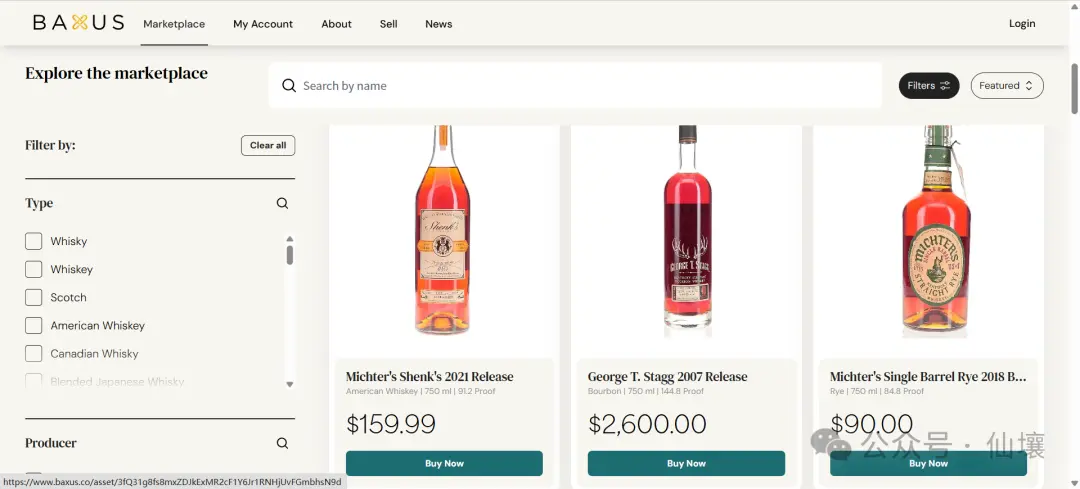
Elmnts
Elmnts specializes in converting commodity assets like oil and gas mining rights into digital tokens on the blockchain. These tokens represent fractional ownership of mining rights assets, allowing investors to earn royalties from oil and gas production by purchasing tokens. Through tokenization, mining rights investments, which traditionally have high barriers to entry and low liquidity, become more divisible and tradable, lowering the barrier to entry.

Powerledger
Powerledger, an Australian energy technology company founded in 2016, is committed to using blockchain technology to promote decentralization and sustainable development in the energy industry. Powerledger uses its platform to track, trade, and trace renewable energy, encompassing applications such as peer-to-peer energy trading, virtual power plants (VPPs), carbon credit trading, and renewable energy certificates (RECs).
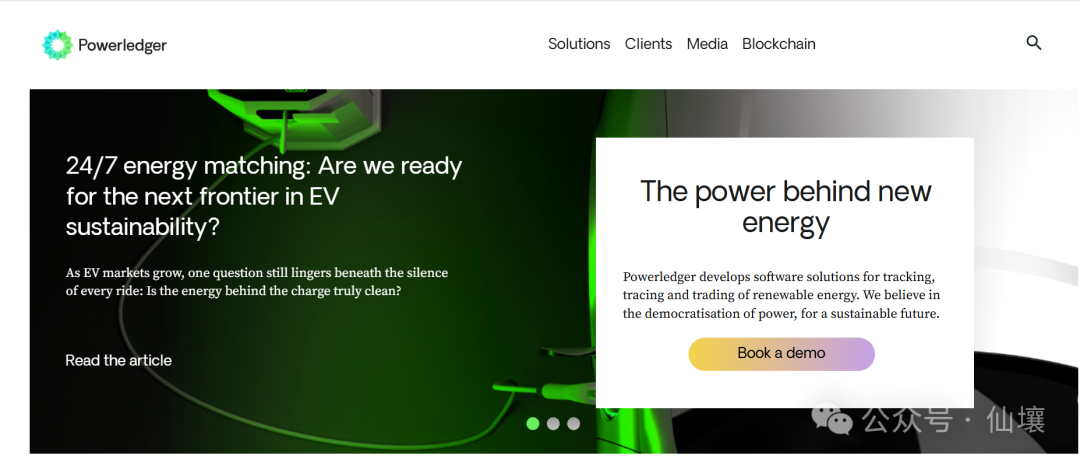
Powerledger tokenizes renewable energy assets like solar and wind power through the Solana blockchain, generating POWR tokens and other tokens for trading and tracking. These tokens represent specific energy units, carbon credits, or renewable energy certificates, allowing users to conduct peer-to-peer transactions directly on the blockchain, reducing intermediaries and improving efficiency.
Summarize
The Solana blockchain's RWA ecosystem encompasses five categories: stablecoins, government bonds, private credit, real estate, and commodities. With its high throughput and low costs, it demonstrates tremendous potential in the RWA market. However, network stability issues, compliance and regulatory challenges, and fierce market competition remain major obstacles to its development. Solana will need to overcome these challenges through technological optimization, development of compliance solutions, and ecosystem expansion, aiming to become a key platform connecting traditional finance and blockchain and achieve long-term sustainable development.
